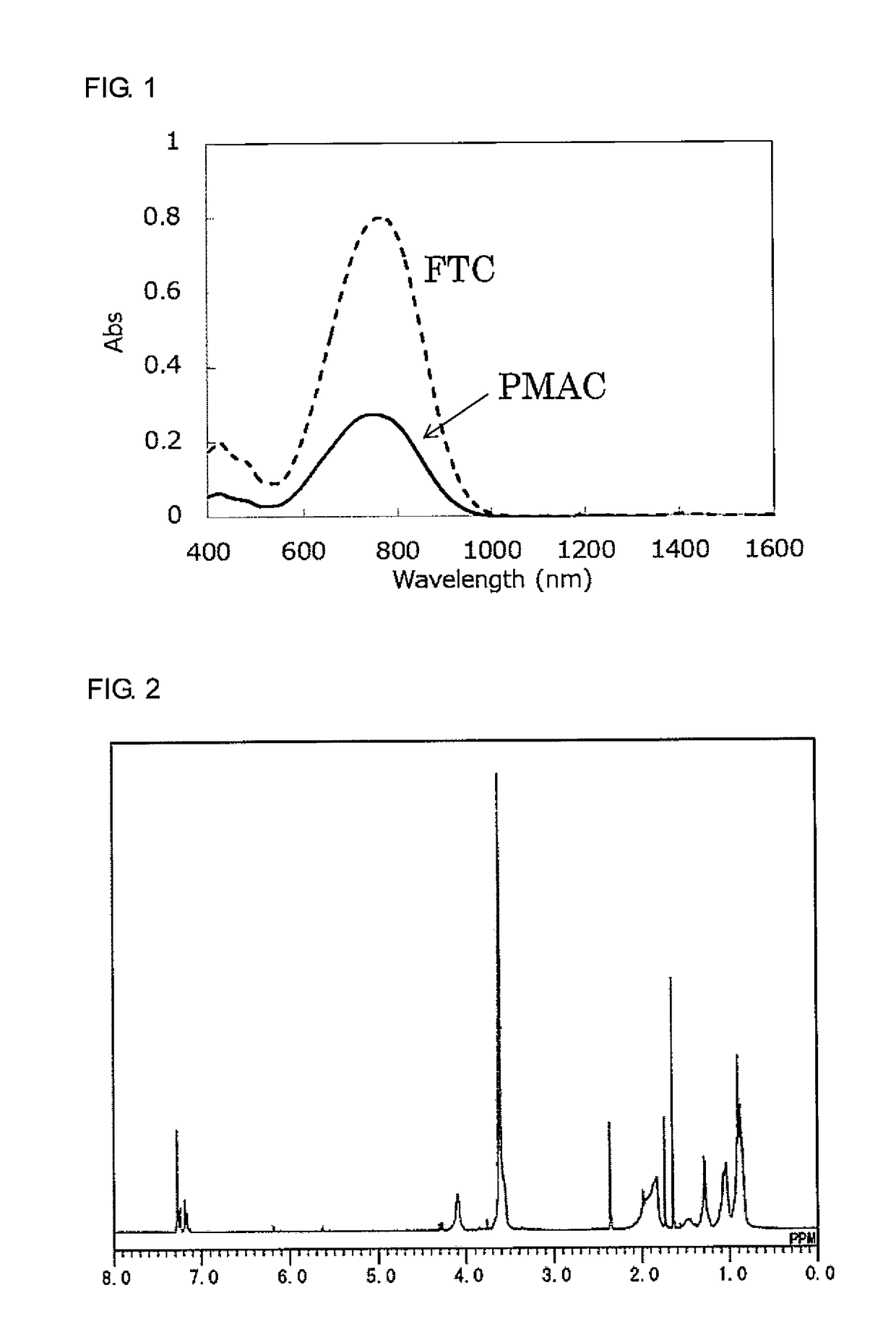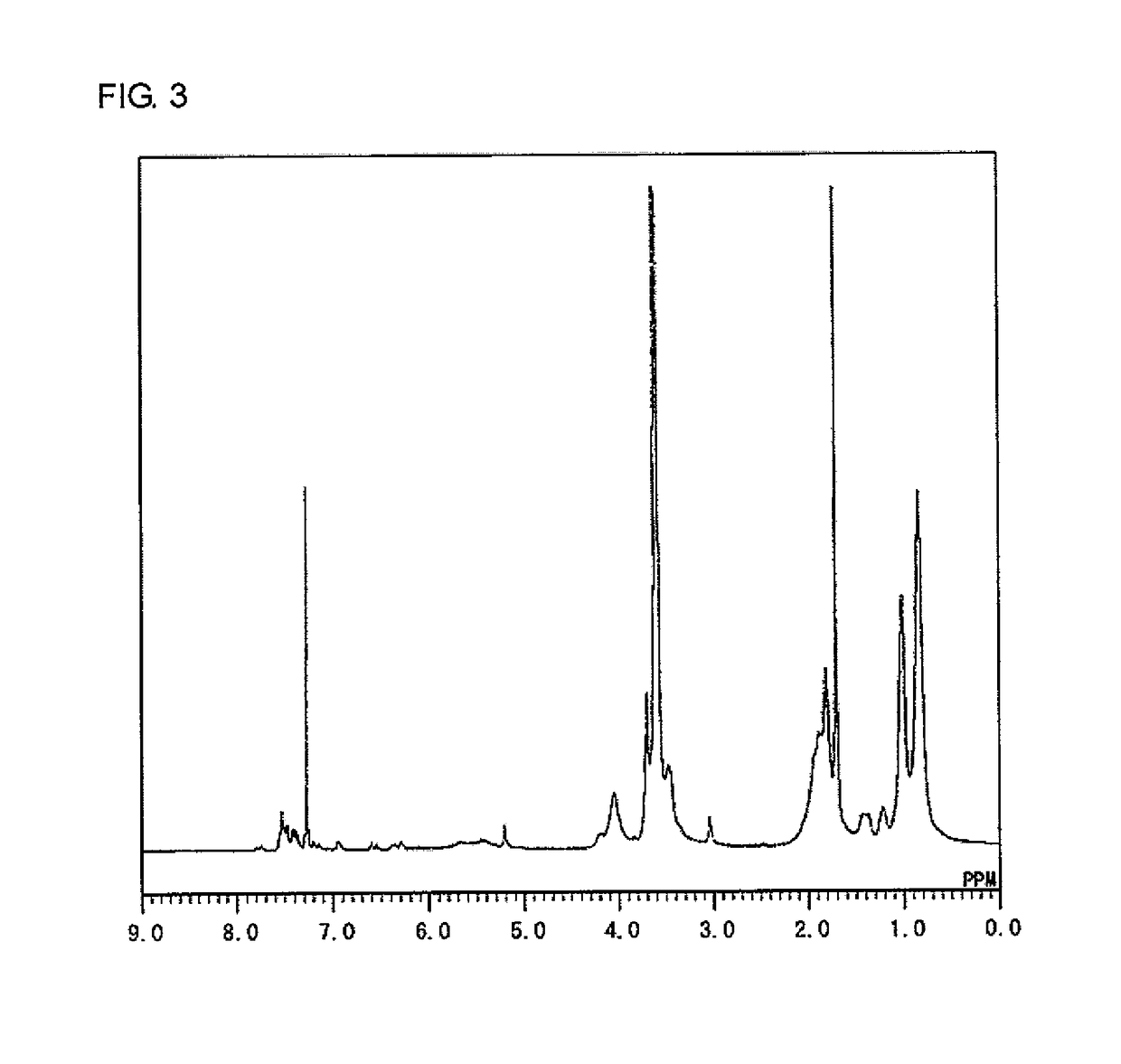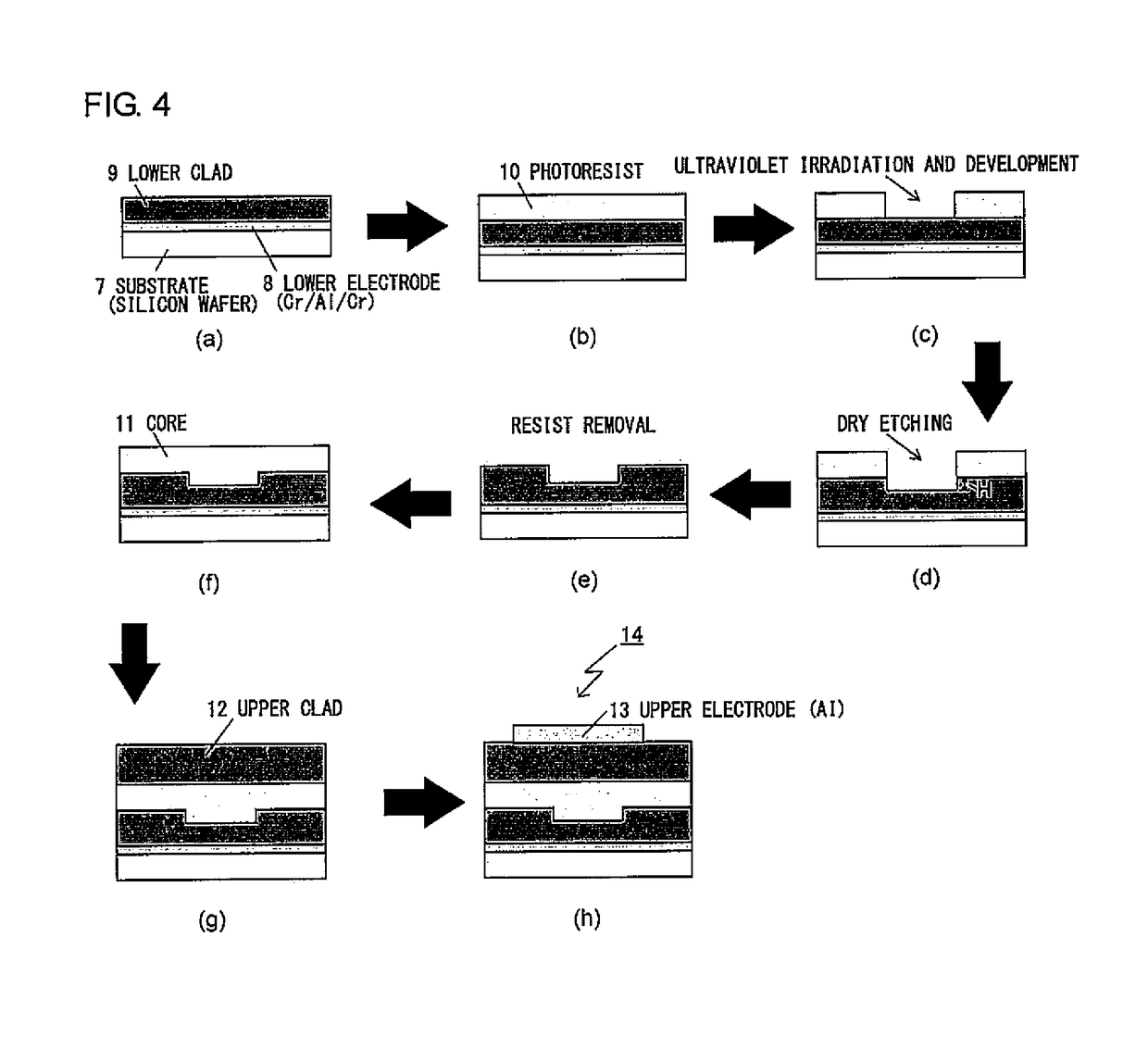Nonlinear optically active copolymer into which alicyclic group has been introduced
a copolymer and optically active technology, applied in the field of nonlinear optically active copolymers, can solve the problems of low glass transition point and tendency to undergo orientation relaxation, and achieve the effects of reducing orientation relaxation of nonlinear optical moiety, easy formation, and easy handling
- Summary
- Abstract
- Description
- Claims
- Application Information
AI Technical Summary
Benefits of technology
Problems solved by technology
Method used
Image
Examples
reference example 1
Production of Nonlinear Optical Compound
[0164]A compound shown below [FTC-OH] was used as a nonlinear optical compound to be introduced into a side chain of a polymer. For comparison, a compound shown below [FTC] was used as a nonlinear optical compound to be dispersed in a polymer matrix. These compounds were produced by a technique similar to that disclosed in X. Zhang et al., Tetrahedron Lett., 51, p 5823 (2010).
reference example 2
Preparation of Clad Material Composition
[0165]To a mixed solution of 1.3 g of ethanol and 0.17 g of a 0.1 N aqueous hydrochloric acid solution, 2.3 g of 3-methacryloyloxypropyltrimethoxysilane [available from Tokyo Chemical Industry Co., Ltd.], 0.23 g of zirconium propoxide [available from Tokyo Chemical Industry Co., Ltd.], and 0.02 g of benzoyl peroxide [available from KANTO CHEMICAL CO., INC.] were added, and the mixture was stirred. This mixture was stored at 10° C. or lower for 12 hours or more to prepare a clad material composition.
example 1
Production of Adamantyl Group-Containing Nonlinear Optically Active Copolymer (PMAC)
[0166](1) Production of Intermediate PcMA
[0167]Under nitrogen atmosphere, 5.0 g (50 mmol) of MMA, 11.0 g (50 mmol) of AdMA, 3.9 g (25 mmol) of MOI, and 0.41 g (2.5 mmol) of AIBN were dissolved in 71 g of deoxygenated THF, and the solution was stirred at 65° C. for 2 hours. After being left to cool to room temperature (about 23° C.), the reaction mixture was added to 654 g of hexane to precipitate a polymer. The precipitate was collected by filtration and dried under reduced pressure at room temperature (about 23° C.) to obtain 11.0 g of a white powder of a target product (PcMA) having repeating units represented by formulae [M], [A], and [I] below (yield=55%).
[0168](2) Production of PMAC
[0169]Under nitrogen atmosphere, 9.0 g of PcMA as prepared above (containing 11 mmol of isocyanate group), 6.0 g (8.7 mmol) of the nonlinear optical compound [FTC-OH] shown in Reference Example 1, and 0.11 g (0.17 mmo...
PUM
| Property | Measurement | Unit |
|---|---|---|
| pore diameter | aaaaa | aaaaa |
| temperature | aaaaa | aaaaa |
| temperature | aaaaa | aaaaa |
Abstract
Description
Claims
Application Information
 Login to View More
Login to View More - R&D
- Intellectual Property
- Life Sciences
- Materials
- Tech Scout
- Unparalleled Data Quality
- Higher Quality Content
- 60% Fewer Hallucinations
Browse by: Latest US Patents, China's latest patents, Technical Efficacy Thesaurus, Application Domain, Technology Topic, Popular Technical Reports.
© 2025 PatSnap. All rights reserved.Legal|Privacy policy|Modern Slavery Act Transparency Statement|Sitemap|About US| Contact US: help@patsnap.com



